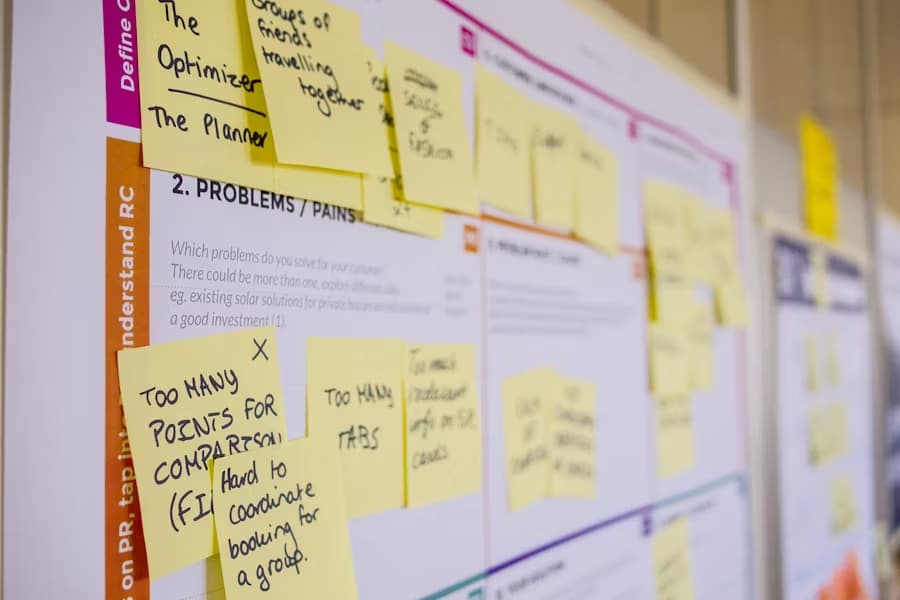Effectively strategizing and orchestrating the distribution of time among different endeavors empowers individuals to operate with greater efficiency rather than sheer effort. Consequently, they achieve heightened productivity within tighter timeframes and under more demanding circumstances. The cultivation of adept time management abilities significantly fosters both personal and professional advancement.
Essential tactics for enhancing time management prowess encompass establishing well-defined objectives, prioritizing tasks according to their immediacy and significance, optimizing the arrangement of one’s workspace, and deconstructing sizable projects into more manageable segments. Through consistent application and honing of these methodologies, individuals can effectively harness the potency of time management to elevate their overall output and quality of life.
Mastering Time Management
Time management emerges as a pivotal skill that orchestrates the harmonious arrangement of tasks and goals within a structured timeline. This discipline extends beyond mere organization; it is the art of prioritizing, strategizing, and optimizing productivity to achieve desired outcomes. At its core, time management is about making informed choices to methodically allocate, safeguard, and recalibrate time in response to evolving circumstances. It’s a dynamic process that demands a keen understanding of one’s priorities, a strategic approach to goal setting, and the flexibility to adapt to unforeseen challenges.
The Significance of Time Management
Embracing effective time management practices unlocks a plethora of benefits that can transform both personal and professional life. Here are some key advantages:
- Elevated Efficiency: By strategically organizing tasks, individuals can significantly increase their output, accomplishing more within limited timeframes. This efficiency boost not only enhances productivity but also frees up time for personal pursuits or relaxation;
- Minimization of Procrastination: Procrastination is often a major hurdle in achieving goals. Effective time management techniques help in breaking down tasks into manageable parts, making it easier to start and maintain momentum, thereby reducing the tendency to delay tasks;
- Enhanced Confidence: Successfully managing tasks and responsibilities fosters a sense of competence and self-assurance. This confidence stems from the realization that one is capable of meeting deadlines, tackling challenges, and achieving goals through disciplined time management;
- Career and Educational Advancement: Demonstrating the ability to manage time effectively is highly valued in both academic and professional settings. It signals to educators, employers, and peers alike that an individual is committed, reliable, and capable of handling high-stakes environments with poise and productivity.
Techniques and Strategies for Effective Time Management
Time management is the cornerstone of both personal and professional success, enabling individuals to maximize productivity, reduce stress, and achieve their goals efficiently. Here, we explore three highly effective techniques that can revolutionize your approach to managing time: The Pomodoro Technique, Eisenhower Matrix, and The 80/20 Rule.
The Pomodoro Technique
Developed by Francesco Cirillo, the Pomodoro Technique is a simple yet powerful method for enhancing productivity and focus. By breaking work into manageable intervals and incorporating regular breaks, individuals can maintain concentration and minimize distractions. Here’s how it works:
- Choose a Task: Select a specific task or project to focus on;
- Set a Timer: Set a timer for a fixed duration, typically 25 minutes, known as a Pomodoro;
- Work Intensely: Concentrate solely on the chosen task until the timer rings, avoiding any distractions or interruptions;
- Take a Short Break: Once the Pomodoro session ends, take a short break, typically 5 minutes, to rest and rejuvenate;
- Repeat and Rest: After completing four Pomodoros, take a longer break, ranging from 15 to 30 minutes, before resuming the cycle.
Key Benefits of the Pomodoro Technique:
- Enhanced Focus: By dedicating short, focused intervals to tasks, individuals can maintain high levels of concentration without succumbing to mental fatigue;
- Improved Time Management: Breaking work into manageable chunks makes it easier to prioritize tasks and allocate time effectively;
- Combat Procrastination: The structured nature of the Pomodoro Technique encourages individuals to start tasks promptly and overcome procrastination;
- Reduced Stress: Incorporating regular breaks prevents burnout and promotes a healthy work-life balance.
Exploring the Eisenhower Matrix: A Strategic Approach to Task Management
The Eisenhower Matrix, also recognized as the Urgent-Important Matrix, is a potent organizational tool crafted by the strategic mind of Dwight D. Eisenhower. Its essence lies in the art of classifying tasks into four distinct quadrants, meticulously assessing their urgency and significance. Let’s delve deeper into this matrix and unravel its profound utility in optimizing productivity and efficiency.
Quadrant Breakdown:
| Quadrant | Urgency and Importance | Examples | Strategies |
|---|---|---|---|
| Quadrant 1: Urgent and Important | Tasks demand immediate attention and hold substantial consequences if unaddressed. | – Imminent deadlines- Pressing crises- Critical issues requiring swift resolution | – Tackle these tasks promptly to prevent escalation.- Allocate sufficient resources and focus to swiftly resolve urgent matters.- Develop contingency plans to mitigate risks. |
| Quadrant 2: Important but Not Urgent | Tasks are pivotal for long-term success but lack immediate urgency. | – Skill development- Relationship nurturing- Proactive project planning | – Allocate dedicated time for these activities to foster growth and development.- Prioritize these tasks to avoid their transformation into urgent matters.- Cultivate habits of foresight and proactive planning. |
| Quadrant 3: Urgent but Not Important | Tasks simulate urgency but often lack substantial significance. | – Unnecessary meetings- Trivial emails- Minor interruptions | – Assess the true importance of tasks masquerading as urgent.- Delegate or eliminate tasks to free up time for more impactful endeavors.- Establish boundaries to minimize interruptions. |
| Quadrant 4: Neither Urgent nor Important | Tasks neither demand immediate attention nor contribute significantly to long-term goals. | – Mindless scrolling on social media- Excessive idle time<- Trivial chores | – Recognize and minimize activities in this quadrant to reclaim time.- Implement time-management techniques to limit engagement in non-value adding tasks.- Channel efforts towards Quadrant 1 and 2 activities. |
A Guide to Leveraging the 80/20 Rule for Optimal Time Management
The Pareto Principle, commonly referred to as the 80/20 Rule, posits that a significant portion of outcomes (approximately 80%) arises from a relatively small fraction of causes or efforts (about 20%). When applied to the domain of time management, this principle suggests that a majority of accomplishments can be attributed to a focused segment of one’s activities.
Implementing this principle involves a strategic approach to task management:
- Identify Key Activities: Begin by pinpointing the tasks that have the most substantial impact on your goals. These are your high-value activities that drive the majority of your success;
- Prioritize Effectively: Once identified, prioritize these crucial tasks. They deserve the lion’s share of your attention and resources, as they are the primary contributors to your outcomes;
- Allocate Resources Wisely: Direct your energy, time, and resources towards these pivotal activities. By doing so, you optimize your productivity, ensuring that your efforts yield the highest possible returns;
- Streamline or Delegate Lesser Tasks: For tasks that fall outside the 20% contributing to the majority of your results, consider streamlining them through automation, delegating to others, or if possible, eliminating them altogether. This frees up more resources to focus on what truly matters;
- Continuous Evaluation and Adjustment: The Pareto Principle is not a one-time application but a continuous process of evaluation and adjustment. Regularly review your tasks and goals to identify any changes in what constitutes the top 20% of your efforts, adapting your focus accordingly.
Overcoming Procrastination: Mastering Time Management
Procrastination often stands as a formidable barrier to effective time management, hindering productivity and impeding progress. However, with the right strategies and mindset, it’s possible to conquer this common obstacle and reclaim control over your time. Here’s how:
1. Prioritize with Purpose:
- Identify tasks that are both important and urgent, and focus your efforts on tackling them first;
- Utilize techniques like the Eisenhower Matrix to categorize tasks based on their significance and urgency, enabling you to prioritize effectively;
- By concentrating on high-impact activities, you can ensure that your time is invested wisely, yielding meaningful results.
2. Divide and Conquer:
- Break down larger, intimidating tasks into smaller, more manageable segments. This not only makes them less daunting but also facilitates steady progress;
- Create a step-by-step action plan outlining the specific actions required to complete each task. Having a clear roadmap minimizes confusion and enhances productivity;
- Celebrate small victories along the way to maintain motivation and momentum, reinforcing a sense of achievement.
3. Embrace Deadlines:
Assign realistic deadlines to each task, fostering a sense of accountability and urgency.
- Use tools like calendars or task management apps to track deadlines and stay organized. Setting reminders can help you stay on track and avoid last-minute rushes;
- Strike a balance between respecting deadlines and avoiding excessive stress. While deadlines provide structure, it’s essential not to allow them to become overwhelming or anxiety-inducing.
4. Cultivate Discipline and Focus:
- Develop a habit of starting tasks promptly, even if it’s with small, initial steps. Momentum builds with action;
- Minimize distractions by creating a conducive work environment. Consider implementing techniques such as the Pomodoro Technique, which involves working in focused intervals with short breaks in between;
- Practice mindfulness to stay present and engaged in your work, reducing the likelihood of succumbing to procrastination.
5. Seek Support and Accountability:
- Share your goals and progress with a trusted friend, colleague, or mentor. Having someone to hold you accountable can increase motivation and commitment;
- Join productivity-oriented communities or groups where you can exchange tips, strategies, and encouragement with like-minded individuals;
- Consider seeking professional support if procrastination significantly impacts your productivity or well-being. A coach or therapist can offer personalized guidance and strategies tailored to your specific needs.
Mastering the Art of Single-tasking
In our fast-paced world, the allure of multitasking is ever-present. Yet, research consistently shows that trying to juggle multiple tasks simultaneously can actually hinder productivity and diminish the quality of work. Embracing the concept of single-tasking, focusing on one task at a time, is a powerful antidote to this modern dilemma.

Why Single-tasking Reigns Supreme:
- Enhanced Focus: By zeroing in on one task, you can allocate your mental resources more effectively, leading to deeper concentration and better outcomes;
- Improved Efficiency: When you give your undivided attention to a single task, you’re less likely to make errors or overlook crucial details, ultimately saving time in the long run;
- Heightened Creativity: Immersing yourself fully in one task allows your brain to explore different angles and solutions more thoroughly, fostering creativity and innovation;
- Reduced Stress: Constantly switching between tasks can induce cognitive overload and elevate stress levels. Single-tasking promotes a sense of calm and control by providing clarity and focus.
Prioritizing Your Priorities:
When confronted with a barrage of urgent tasks, it’s essential to prioritize effectively. Here’s how to do it:
- Evaluate Importance: Determine the significance of each task in relation to your overall goals and objectives. Not all tasks are created equal, so allocate your time and energy accordingly;
- Assess Deadlines: Consider the time sensitivity of each task. Tasks with impending deadlines should naturally take precedence, but don’t overlook long-term projects that may require ample lead time for successful completion;
- Create a Task Hierarchy: Rank your tasks based on both importance and deadlines to establish a clear roadmap for execution. This ensures that you’re addressing the most critical tasks first while still allowing time for less urgent responsibilities.
Balancing Act: Navigating Distractions and Procrastination
Even with the best intentions, distractions and procrastination can derail your efforts to single-task effectively. Here’s how to maintain equilibrium:
- Minimize Distractions: Identify common distractions in your environment, such as social media, email notifications, or noisy surroundings, and take proactive steps to mitigate them. Consider using productivity tools or techniques like the Pomodoro Technique to structure focused work intervals;
- Set Boundaries: Communicate your need for uninterrupted focus to colleagues, family members, or roommates, establishing designated periods of “deep work” where interruptions are minimized;
- Combat Procrastination: Break tasks down into smaller, manageable chunks to alleviate feelings of overwhelm. Set specific, achievable goals and reward yourself upon completion to reinforce positive habits and combat procrastination tendencies.
Navigating Through Noise: Strategies for Enhancing Focus in a Cluttered World
In an era where the constant buzz of notifications and the allure of endless digital content vie for our attention, maintaining focus has become a formidable challenge. The key to reclaiming productivity lies in tackling these distractions head-on with a proactive approach. Here are some comprehensive strategies and insights to help you minimize interruptions and enhance your concentration:
Identifying and Mitigating Distractions
- Conduct a Distraction Audit: Spend a week tracking what interrupts your flow most frequently. Is it social media, email alerts, or perhaps the noise from your environment? Recognizing these patterns is the first step towards effective management;
- Tailored Strategies for Common Disturbers: Once you’ve pinpointed the culprits, implement specific measures to combat them;
- For Social Media and Internet Overuse: Use website blockers or apps designed to limit your time on these platforms. Allocate specific “browse periods” to indulge in these distractions guilt-free;
- For Smartphone Interruptions: Activate do-not-disturb modes during critical work periods. Customize notification settings to only allow essential alerts;
- For Environmental Noise: Invest in quality noise-cancelling headphones. These can be a game-changer in noisy offices or bustling home environments, allowing you to create an oasis of calm.
Crafting a Productive Routine
- Harness Your Peak Hours: Identify the times of day when your energy and focus peak. Schedule your most challenging tasks during these windows to maximize efficiency;
- Structure Your Day with Purpose: Develop a daily schedule that alternates between focused work sessions and brief breaks. This rhythm can help maintain high levels of concentration while preventing burnout;
- Balance is Crucial: It’s vital to remember that productivity isn’t just about work. Ensure your routine includes slots for relaxation, hobbies, and social activities. This balanced approach not only boosts overall well-being but can also enhance work performance through improved mental health.
Conclusion
In conclusion, mastering the art of time management is not merely about working harder, but rather about working smarter. By implementing key strategies such as setting clear goals, prioritizing tasks, organizing one’s environment, and breaking down projects, individuals can unlock greater efficiency and productivity. This journey towards improved time management not only enhances professional growth but also fosters personal well-being. Therefore, embracing effective time management techniques is essential for achieving success and fulfillment in both professional and personal realms.



